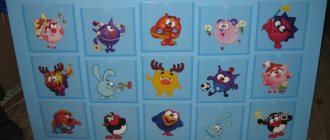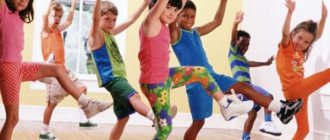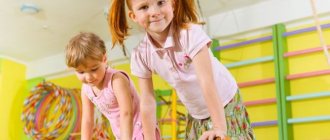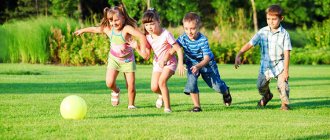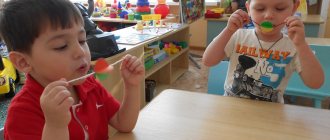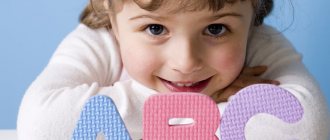The principle of working on a treadmill seems quite clear and simple to anyone: get up and go. Well, or ran. Depends on the level of training. A monotonous and rather long task, isn’t it? What if we look at this process from a slightly different angle and make small changes? This is what we will talk about now.
One of the options for diversifying activities on the track is a combination of aerobic and strength training.
Ekaterina Dyachenko
fitness trainer
Our task is to diversify cardio so that it is not boring and monotonous.
Circuit training
If you just get bored with running, you can give yourself a full-fledged circuit training session. In 40 minutes you will burn many more calories than if you just ran. The most important rule is not to rest!
Run
Duration:
10 minutes.
Photo: istockphoto.com
We run them at a pace that is comfortable for us, without raising our heart rate to the limit.
If you have problems with a 10-minute run, you can replace it with interval running. We walk calmly for two minutes and run for two minutes. In this case, aerobic exercise lasts the same 10 minutes, without changes.
Circuit training with expanders from the absolute world champion in bodybuilding
Squats
After cardio, we don’t rest and immediately go to the barbell.
- We place our legs shoulder-width apart, feet parallel to each other.
- We place the bar on our shoulders and bend our legs to a right angle, keeping our back straight.
- The head does not drop, the gaze is in front of oneself. We work with a weight that is difficult for 10 repetitions.
We perform squats 10 times.
Photo: istockphoto.com
Treadmill Exercises
If you are already tired of circuit training or running and squats are not enough, these exercises are definitely suitable. All you need is fitness bands. On the track, choose the lowest speed.
Walking sideways
Technique:
- We put the elastic band on the middle of the thighs and stand sideways to the treadmill control panel.
- We set the speed to low.
- We move with side steps in a half-squat, trying to ensure that the elastic band always remains in tension. Small steps, straight back, hands at the chin.
We walk for a minute on each side.
Photo: istockphoto.com
Lunges with a swing back
Technique:
- The elastic band clasps both thighs in the middle, we stand facing the control panel.
- The track speed is low. We lunge with one leg, after which we straighten the supporting leg and bring back the one that just lunged.
- We repeat the same with the second leg - lunge and swing back. The swing is made quickly and not very high. We keep an eye on the balance. You can lean on the special handrails of the walkway.
We walk like this for about 1-2 minutes.
Walking like a penguin
Technique:
- Elastic band on the hips.
- We set the average speed level on the track and go.
- The feet are shoulder-width apart and do not allow the tension in the elastic band to weaken, the toes are slightly turned to the sides. We try to use our buttocks when walking.
We walk like this for about 2-5 minutes.
TRX exercises to strengthen your deep core muscles. Back health depends on them
What happens if you don't warm up before training?
About Us
Educational, health-improving, developmental and therapeutic-preventive activities for different age groups, carried out in our kindergarten, are aimed at solving these problems.
An increase in the information load and, accordingly, the number and duration of classes - all this leads to fatigue in children, disruptions in the daily routine: a reduction in walks, daytime sleep, free time, and, of course, negatively affects the health of preschoolers. The teachers of our preschool educational institution understand the importance and necessity of health-improving measures in such a situation. To successfully solve problems of health improvement and comprehensive development, a variety of methodological literature is used, primarily a program that clearly defines the main areas of work for each age, as well as the “Green Light of Health” (M.Yu. Kartushina), which helps organize classes and health-improving activities for more interesting and exciting.
It is in preschool age that vitally important basic locomotor skills and abilities are formed, the foundation of motor experience is created, the ABC of movement is mastered, from the elements of which all human motor activity is subsequently formed. If we take into account that physical activity is both a condition and a stimulating factor in the development of intellectual, emotional and other spheres, the need for intensive scientific development of issues of physical education of preschool children becomes obvious.
It is no secret that children spend most of their time at home in a static position (at a table, computer, etc.), which increases the load on certain muscle groups and causes them to tire. The strength and performance of skeletal muscles decreases, which entails poor posture, flat feet and delayed age-related development.
After conducting a diagnostic examination of the pupils’ feet (together with a doctor), we noticed that the number of children with musculoskeletal disorders is increasing from year to year. (According to research, 75% of preschoolers in kindergarten have various musculoskeletal diseases). As children grow, they experience various types of deformities in the spine, legs and feet.
With flat feet, the spring, shock-absorbing role of the foot decreases or disappears, as a result of which the internal organs become poorly protected from shocks. The main reason for its occurrence is weak musculo-ligamentous apparatus of the foot.
After analyzing all the data, the teachers asked themselves a very important question: how, in what way, can children relieve signs of fatigue and thereby strengthen the arch of the foot? Theoretical, organizational and methodological approaches have been developed to compensate for the negative impact of increased intellectual stress. The idea came up to use non-standard methods of preventing flat feet, for example, a “Health Track”, equipped both in the gym (for exercise in the cold season) and on the street (summer option).
“The Health Track” is a set of natural, environmentally friendly materials with different surfaces (to develop the tactile sensations of the feet): - small wooden balls (1.5-2 cm in diameter); — massage paths with spikes of different heights; - river stones (diameter 5-8 cm and 10-15 cm);
The “health track” can be used either in its entirety or in individual cells. For example, a dry pool in games, etc.
Walking along various surfaces of the path, children receive a consistent impact on the biologically active zones located on the surface of the foot, associated with the immune system, helping to strengthen the muscles of the foot and lower leg and having a positive effect on the formation of the arches of the foot.
When walking on various surfaces, the foot first flattens somewhat, then (as it passes) with the help of active muscle contraction it returns to its original position. Active points and zones located on the foot contribute to the hardening of the child’s body. They are also an excellent means of preventing and correcting flat feet, which is easier to prevent than to treat.
The foot is the foundation, the support of our body, and any violation of its development can affect the child. Since ancient times, humanity has had knowledge that individual parts of our body interact with other parts of the body and the entire organism. In the human body there are countless correspondence systems, which are energy-informational copies of the entire organism or its individual parts. For greater clarity and convincingness in the search for points of correspondence with internal organs directly in the direction of children’s movement along the “Path of Health,” it is useful to mark a diagram of the foot with images of organs (heart, ears, eyes, liver, etc.). During classes, the teacher focuses the pupils’ attention on the corresponding area of the foot, encourages them to find points corresponding to the internal organs, which in turn is also an indirect massage.
Skin folds in the area of the finger joints are the boundaries between parts of the body; their sequential locations on the body correspond to the head, chest, and abdomen. The presence of clear landmarks on the foot for searching for treatment points allows preschoolers to accurately understand the placement of organs and their stimulation for therapeutic purposes.
The feet and hands (in Eastern medicine) are remote controls for human health. Using them incorrectly will never harm the child - it will simply be ineffective.
What are the goals of the mini-project we have developed?
Objectives: - to prevent the development of flat feet in children; - create conditions that correspond to a higher level of motor development of the child.
Objectives (inclusion of the “Health Path” in the healing process, taking into account age characteristics and characteristics of physical development): - prevent the development of flat feet; — increase the protective forces of the child’s body and the impact of various irritants on the foot through self-massage of biologically active points; - bring children to the understanding that each person must take care of his own health; — ensure normal physical development, protection and promotion of health; - gradually harden the body and increase its resistance to environmental influences; - promote activity, independence, and discipline.
Mini-project implementation stages:
— the use of non-standard methods for the prevention of flat feet in physical education classes and in independent motor activity, the inclusion of the “Health Path” in the hardening system after sleep; — use of the “Health Track” as physical education and correctional equipment to increase physical activity; — development of static and dynamic stability (equilibrium).
Step-by-step work in correcting ODA defects
Participants of the mini-project: pupils of middle, senior and preparatory school groups. Management and support of the mini-project: - the versatility of the “Health Path” (with ordinary walking on various surfaces you can treat any part of the body, any organ and joint); — accessibility (no skills or abilities are needed, it’s enough to walk once, overcoming fear and slight discomfort, and then enjoy walking again); — ease of use; — high efficiency (a pronounced effect occurs after 2-3 weeks of daily walking for 3-4 minutes); — absolute safety (stimulation of biologically active points on the foot leads to the prevention of the formation of flat feet and its cure).
This healing system was created by nature itself, and man skillfully applies it. This is her strength and security.
Evaluation of the results of the mini-project: - reduction in the development of flat feet; — improvement of muscle-joint sense (kinesthesia) and tactile (skin) sensations; - general relaxation (relaxation) of the body and its individual limbs; - aesthetic appeal and playful orientation; — design versatility; — the use of inexpensive, accessible material that is durable, hygienic, and pleasant to the touch; — simplicity of design, allowing to achieve the maximum possible pedagogical and correctional-developmental effect.
The practical significance of the results lies in the possibility of more effectively adjusting regulated physical education classes for preschoolers and promoting a targeted emphasis on the development of certain physical qualities.
